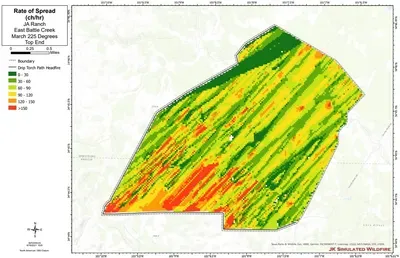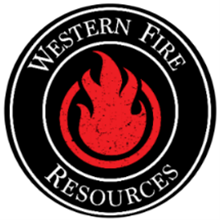In the old days, Prescribed Fire Burn Bosses would run a program called BEHAVE on the command prompt in order to model fire behavior. For those of you who are too young to know what a command prompt is, I am likewise probably too old to make any kind of sense if I were to attempt to explain it to you. The important thing to know is that BEHAVE is still around today, in close to its original form, but run in a Graphic User interface (GUI) format instead. It still outputs wide ranges of fire behavior estimates that are not spatially explicit and is largely an exercise in checking the box when asked if you modeled fire behavior. Spatially explicit models, like the one we run, have also been around for quite some time, but are much more difficult to run and, thus, less commonly used. Their advantage is that they utilize the same factors we use for our wildfire risk analyses but allow us to run simulations for a set of potential prescriptions. They are invaluable to compare prescriptions, plan for holding resource allocation, and identify potential critical holding points where pretreating fuels, planning for increased holding resources, or altering ignition patterns may be necessary. While no model is 100% accurate, being able to visualize fire behavior predictions across a landscape under a variety of potential prescriptions is a big improvement over generalized statements like “The flame length is expected to range from 1.7 to 12.8 feet. The rate of spread is expected to range from 3.7 to 29.4 feet per minute…” If you know, you know. Let us help you bring your fire behavior modelling into the 21st century.

